The ‘Stranger Things’ Part 1 Ending Revealed a Huge Secret About the Upside Down
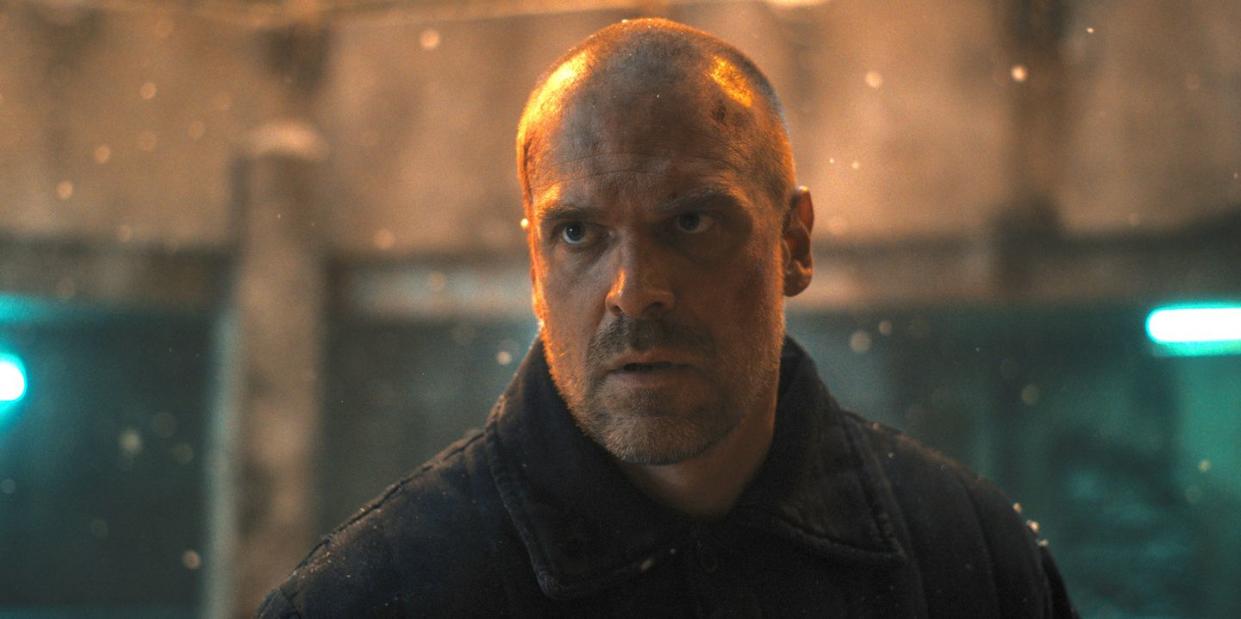
- Oops!Something went wrong.Please try again later.
The following contains spoilers for Stranger Things 4 Part 1
Serious question: What is the Upside Down? Throughout four seasons of Netflix’s Stranger Things, we’ve only become vaguely acquainted with the metaphysically inverted, floaty dust particle reality beneath Hawkins, Indiana—and, presumably, all of space. Part Dante hellscape, part real-world application for skills acquired playing Dungeons and Dragons, the Upside Down is also uniquely adolescent. While adults, soldiers, and scientists enter the space, only kids seem to be inexplicably drawn to it, trapped inside it, possessed through it. The monsters come for them.
The Season 4 Part 1 finale gave us even more insight into this inverse realm, which may be the key to understanding not just Part 2, but also the series itself.
From its first season, Stranger Things has been about childhood. It’s about friendship and belonging. The conflicts are monster-driven, sure, but they’re primarily interpersonal; they involve those things that stand in the way of friendship. Lies. Betrayal. Ostracization. The real monsters are these things that threatened belonging, which is why features like bullying, alienation, and outcasts figure so prominently into the seasons; more than monsters, these things are what kids fear. Facing the slimy pubescent horrors of the Upside Down—which is maybe a metaphor for adulthood or simply a creepy-ass place that reflects, impressionistically, all our adolescent anxieties—is nothing compared to horrors of actually getting older, and potentially growing apart.
In season 4, it took seven episodes for the gang to re-enter the Upside Down. What they found could change everything we know about that world. How the Upside Down woks may now be the central question of the series. So before Part 2 rolls around, let’s take stock of some of these new discoveries.
Here are some key discoveries from the Stranger Things 4 Part 1 finale.
The Upside Down Is Soooo 1983
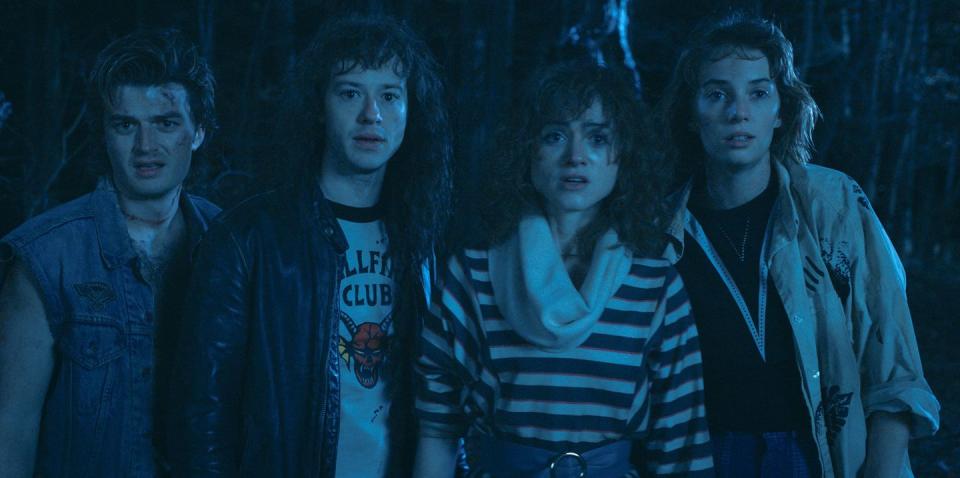
When the Upside Down gang arrives at Nancy’s house, they are unable to find two guns kept in a shoebox under Nancy’s bed. Instead, they find shoes, though Nancy says the shoes are old. So is everything else in the room. The mirror. Her stuffed animal. The most recent diary entry is dated 1983, meaning the Upside Down is three years old—or at least, the version of the Upside Down the gang entered is three years old.
Before this moment there was always a question of continuity in the Upside Down: how is it that every location, object, thing, exactly mirrors the Right-side Up? Is there a monster keeping the Upside Down constantly updated for every change in the Right-side Up?
The Upside Down always seemed to be frozen in time, but which time has never been fully explored. Nancy’s discovery opens up some potential plotines for the next season of Stranger Things; is it possible to use the Upside Down to travel back in time? While we don’t know if one can re-enter the Right-side Up three years in the past, it does seem possible to access past objects in the Upside Down.
Conceivably, one can also access past people in the Upside Down. If the gang has entered the Upside Down in 1983, at the moment Will was first captured, wouldn’t that mean, technically, Will is also in the Upside Down (or, rather, Will -3 years)? Wouldn’t it also mean that in a short amount of time, Barb will enter the Upside Down. Which means ... justice for Barb!?
Perhaps the upside down is permanently stuck in 1983? Still, that seems impossible because we know the gate opened as early as 1979. (More on that down below.) Plus, the gate was opened again by the Russians in 1985, so shouldn’t that have given the Upside Down a hardware update?
Time travel is still a recent phenomenon in Stranger Things. We’ll need more Dustin exposition to work that one out.
Vecna-Gate

Another piece of information we learned in the Part 1 finale is the existence of multiple gates. (It seems at least two gates lead to the same version of the 1983 Upside Down, though it’s not inconceivable that other gates go to a different point on the timeline; this might be helpful in defeating Vecna later on. Or saving Barb!)
The gates also seem to appear at each kill site—meaning the trailer, the woods, and the lake. The gates are possible, Dustin speculates, because Vecna has similar psychic powers to Eleven. (Much more on that below.)
Why is Vecna opening multiple gates? Dustin’s answer is that he wants to send more monsters into the Right-side Up to do the bidding of the Mind Flayer—which, we guess, is to corrupt the Right-side Up. Because: evil plan.
But this is too simple an answer.
Henry Creel = Brenner’s Assistant = 001 = Vecna
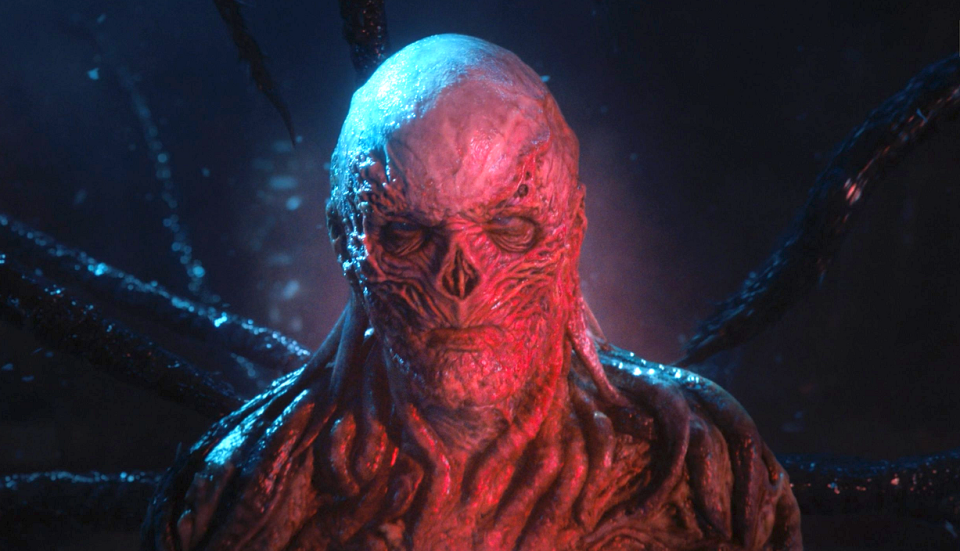
The reason Vecna, like Eleven, can open gates is because Vecna was once Eleven’s “sibling.” In a sensory deprivation tank hallucination, Eleven learns Vecna’s entire story—how he moved to Hawkins with his family, the Creels; how he developed psychic powers and hatred for his sinning parents; how he killed his family, leaving only Victor (played in his young form by Ozark actor Kevin L. Johnson and in his old, grizzled form by horror icon Robert Englund); how he was then adopted by Brenner as 001 and trained; how Brenner couldn’t control him and so chipped him, taking away his powers; how he manipulated Eleven to remove the chip; and how he then proceeded to kill everyone in the lab.
Then Eleven—who in this future moment discovers that she in fact does not have the blood of her siblings on her hands—defeats Henry Creel, sending him to the Upside Down where he gets blasted by lightening and burnt to a crisp and, thus, becomes Vecna. That was 1979. (Unless she blasted him forward to 1986? Or does every gate lead to 1983? It’s all still unclear.)
So why is Vecna only now trying to re-open the gates? What’s he up to? As 001, he explained to Eleven that he despised all forms of order and control. He also seems to have a vague anger at the hypocrisy of humans, and a desire for cosmic retribution. So, he’s opening the gate in order to make teenagers pay for their sins?
It is, admittedly, kind of convoluted at this point.
But it does set up an inevitable rematch between Eleven and 001, which brings us to the final insight of episode 7 ...
Love Has More Hit Points Than Anger
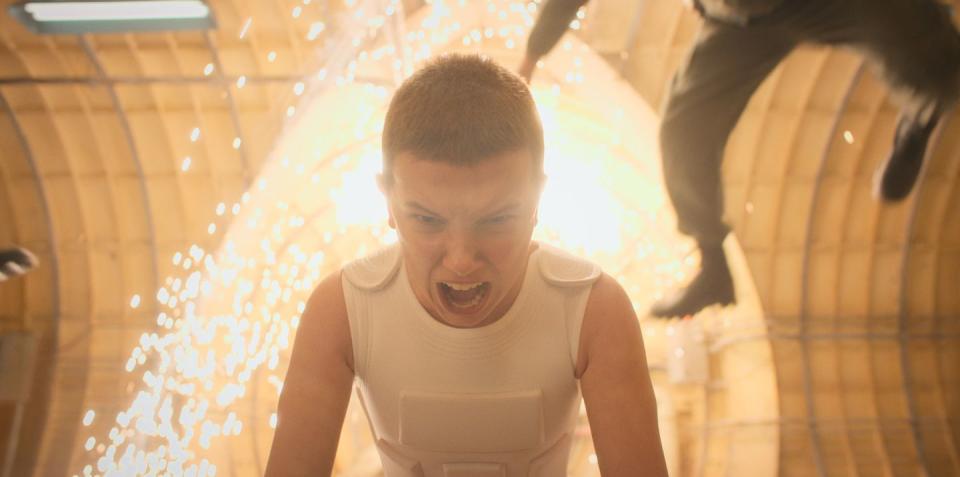
As in Harry Potter, as in Star Wars—as in so many journeys of this sort—so too in Stranger Things does our hero realize how to defeat evil: not using one’s powers out of fear or anger, but out of love. Ugh. We know.
It’s a bit hokey, but it clarifies much of the season so far.
Throughout the entire season, we watch as Eleven both struggles to regain her powers in the present and also struggles to develop them in the past. In the present, she tries to use them against Angela multiple times while being bullied—acting, presumably, out of anger and hate.
In 1979, we see her also struggle under similar circumstances, with her siblings bullying her. Brenner’s assistant (Henry Creel, 001) tells Eleven how 001 developed his powers: He thought of a memory that was both sad and also angering. Eleven uses this technique—remembering her mother being taken from her—and defeats 002 during a psychic battle.
This sad/angry memory, however, isn’t enough to defend her from attacks by the other siblings later, nor from 001 who is about to kill Eleven when she decides to draw from a different memory. Eleven’s new memory, however, is one of pure love and acceptance—the moment she is born and held by her mother.
Interestingly, this technique is also how Max was able to escape Vecna while her favorite song was playing: she remembered her friendships, the source of love that counteracted her abusive parents and brother.
Eleven defeats Henry Creel by drawing from her own purely happy memory. (This occurs in 1979, but Eleven will also use this technique in 1983 to defeat the Demogorgon.)
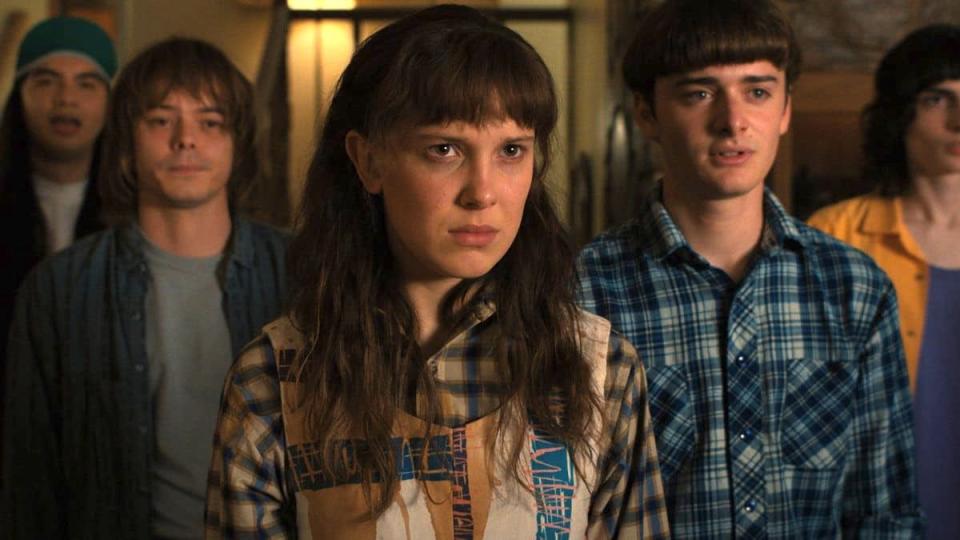
Eleven’s powers, therefore, spring from belonging. Which means that the most powerful powers are rooted here, not in anger like for Henry Creel.
This conclusion might also explain the nature of the Upside Down—which seems to represent the inverse of belonging—a world ruled by rage and alienation.
The gates—the slime and overtly yonic imagery of the entrance into the Upside Down—connate a kind of birth into this world. Entering this world, as 001 does, suggests a transformation governed by anger, fear, and loss. (When kids enter the Upside Down, it is because of fear, alienation, and separation from their social group.) The Upside Down isn’t just an inversion of the Right-side Up, but rather a kind of magnification of everything perverse and destructive in the Right-side Up. It represents the worst of us.
Eleven’s saving memory is also a birth, literally. But it is a happy one. She comes into the world feeling love and belonging.
This contrast also explains why the series focuses so much on bullying and social anxiety. Many of Vecna’s victims this season suffer some kind of anxiety—and each victim at one time visited the school counselor, signaling this distress. These are kids who risk isolation from their peers.
Their deaths might be read as coded suicides (Vecna tells Max that after Billy’s death she also wanted to die, and the way many characters discuss the surprising and sudden nature of the deaths seems in keeping with reactions to suicidality). Henry Creel's story itself gestures to a very dark outcome of social alienation; his rampage through the lab is hard not to read against the backdrop of school shootings. (Particularly, when he tells Eleven to “stay put,” which reads like the “stay home” request of real-life gunmen.)
Ultimately, the series will have to grapple with the nature of the Upside Down—both thematically and metaphysically.
How might Eleven’s conclusions about the true source of her power help defeat Vecna? Perhaps she won’t. Perhaps instead of defeating him again, Eleven will try to save him. This outcome feels more in keeping with the season’s themes.
Maybe time travel will aid in this endeavor. Maybe no one who died has to stay dead.
You Might Also Like

